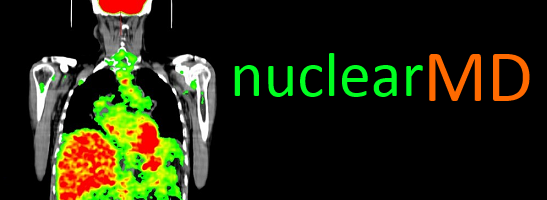Alzheimer's Disease
A 64 year old male with memory problems for last seven years presents with severe progressive dementia. MRI of the brain showed moderate cortical volume loss and non-specific periventricular white matter changes secondary to small vessel disease.

F 18 FDG Brain PET-CT shows cortical atrophy and moderate to severely decreased metabolism in the bilateral posterior temporo-parietal regions, worse on the right. Mild decreased activity is also noted in the frontal regions. There is sparing of the sensori-motor cortex with normal distribution in the occipital region, sub cortical structures and the cerebellum.

Alzheimer’s’ disease or Dementia of Alzheimer’s type (DAT) is strongly suggested in this patient due to the classic finding of reduction in the bilateral posterior parieto-temporal regions and sparing of the sensorimotor cortex. Decreased metabolism in the frontal regions is suggestive of advanced Alzheimer’s disease.
In early Alzheimer’s diseases, PET findings relate to hypometabolism in the bilateral parietotemporal regions, which can often be asymmetric. In more advanced disease, the frontal lobes also show decreased FDG uptake. CT and MRI show ventricular and cortical atrophy, which has been used to diagnose DAT, but studies have shown that PET is more sensitive than MRI or CT to detect cortical involvement in dementia.
1. Franz Fazekas, Abass Alavi et al. Comparison of CT, MR, and PET in Alzheimer’s Dementia and Normal Aging. JNM 1989; 30: 1607-1615.
This case was compiled by Dr. Sabeen Rahman (BCM)
